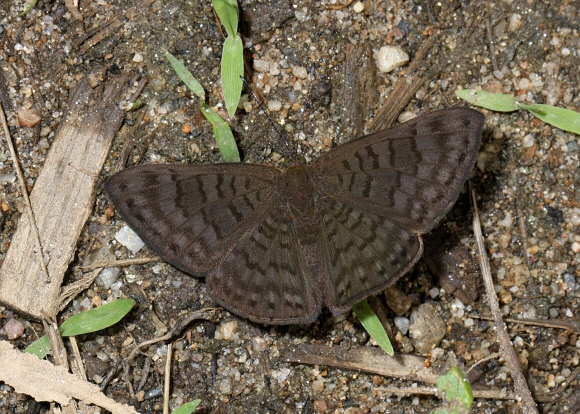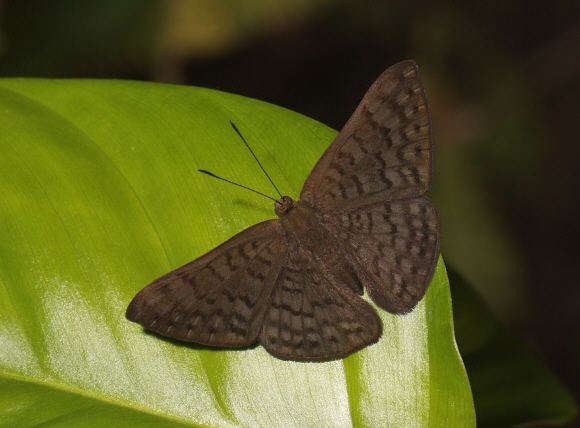 Emesis ocypore ocypore, male, Mariposas, Satipo, Peru – Adrian Hoskins
Emesis ocypore ocypore, male, Mariposas, Satipo, Peru – Adrian Hoskins
Introduction
The distinctive wing pattern and shape of Emesis make them instantly recognisable as a genus, but some of the 41 known species can be very difficult to tell apart.
The male of Emesis ocypore is similar to lucinda, but the latter is larger, has more linear markings, and has a wider grey area at the apex of the forewings.
Emesis ocypore is a very widespread species, found from Costa Rica to Peru and Bolivia. There are 3 subspecies. The illustrated subspecies ocypore ocypore is found in Peru, Bolivia, and in the states of Mato Grosso and Rondonia, in Brazil.
Habitats
This species occurs in forested habitats at altitudes between about 200-1400m.
Lifecycle
I have no information specific to ocypore. The eggs of Emesis species are typically white and highly sculptured. They are laid singly or in clusters of up to 30, according to species. The known larval foodplants encompass the families Ranunculaceae, Euphorbiaceae, Rhizophoraceae, Sterculiaceae, Anacardiaceae and Nyctaginaceae.
Adult behaviour
On sunny days males are often seen imbibing moisture from shady forest tracks or dry river beds, but in overcast conditions they commonly appear in more open situations, and sometimes settle on foliage in forest edge habitats. When feeding they usually hold the wings outspread.
Females are seen much less frequently as they spend most of their time within the forest, but can occasionally be seen visiting flowers such as Lantana, Casaena, Hamelia or Croton.

Emesis ocypore ocypore, male, Mariposas, Satipo, Peru – Adrian Hoskins
